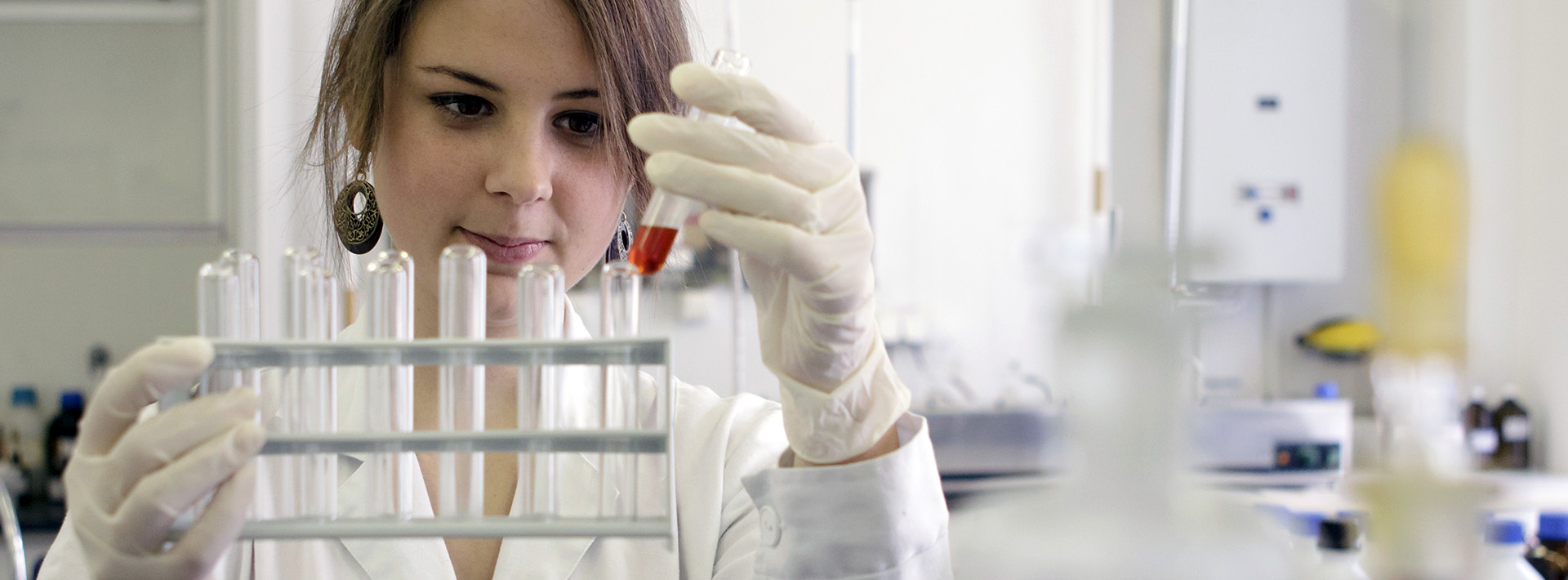Daten
Offizielle Daten in der Fachveröffentlichung für das folgende akademische Jahr: 2022-2023
Lehrbeauftragte/r
-
Dr. Gábor István PETHŐ
professor,
Department of Pharmacology -
Semesterwochenstunden
Vorlesungen: 0
Praktika: 28
Seminare: 0
Insgesamt: 28
Fachangaben
- Kode des Kurses: OBH-010-G
- 2 kredit
- Biotechnology MSc
- Specialty in Medical Biotechnology modul
- autumn
OBH-010-E parallel
Vizsgakurzus:nein
Zahl der Kursteilnehmer für den Kurs:
min. 1 – max. 30
Thematik
In the practices, the students will carry out laboratory experiments involving methods used for in vitro toxicity testing. On prokaryotic and eukaryotic cells, including cells of animal and human origin, they examine the cyto- and genotoxic effects of xenobiotics of toxicological relevance (e.g. mycotoxins, metal ions, and enzyme inducers) and of UV radiation; they analyze the binding of chemicals (e.g. ochratoxin A) to human albumin, and the effects of some drugs on the expression of cytochrome P450 (CYP) genes. The students will be acquainted with the principles of the methods used, the mechanisms of action of the toxicants studied, the details of the experimental techniques, as well as the statistical analysis, presentation and interpretation of the experimental results. The laboratory work will be carried out in an interactive fashion. The students will perform the experiments jointly according to a detailed protocol previously provided for them.
Vorlesungen
Praktika
- 1. Investigation of protein-ligand interactions with fluorescence spectroscopy I
- 2. Investigation of protein-ligand interactions with fluorescence spectroscopy II
- 3. Investigation of protein-ligand interactions with fluorescence spectroscopy III
- 4. Investigation of protein-ligand interactions with fluorescence spectroscopy IV
- 5. Detection of UV-induced cyto- and genotoxicity in Serratia marcencens I
- 6. Detection of UV-induced cyto- and genotoxicity in Serratia marcencens II
- 7. Detection of UV-induced cyto- and genotoxicity in Serratia marcencens III
- 8. Detection of UV-induced cyto- and genotoxicity in Serratia marcencens IV
- 9. Detection of cytotoxicity by the Azotobacter agile assay I
- 10. Detection of cytotoxicity by the Azotobacter agile assay II
- 11. Detection of cytotoxicity by the Azotobacter agile assay III
- 12. Detection of cytotoxicity by the Azotobacter agile assay IV
- 13. Detection of genotoxicity in Chinese hamster ovary cells by comet assay I
- 14. Detection of genotoxicity in Chinese hamster ovary cells by comet assay II
- 15. Detection of genotoxicity in Chinese hamster ovary cells by comet assay III
- 16. Detection of genotoxicity in Chinese hamster ovary cells by comet assay IV
- 17. Assessment of the viability by ATP analysis of human HepG2 cells exposed to cytotoxic chemicals I
- 18. Assessment of the viability by ATP analysis of human HepG2 cells exposed to cytotoxic chemicals II
- 19. Assessment of the viability by ATP analysis of human HepG2 cells exposed to cytotoxic chemicals III
- 20. Assessment of the viability by ATP analysis of human HepG2 cells exposed to cytotoxic chemicals IV
- 21. Detection of CYP induction by drugs in HepG2 cells I
- 22. Detection of CYP induction by drugs in HepG2 cells II
- 23. Detection of CYP induction by drugs in HepG2 cells III
- 24. Detection of CYP induction by drugs in HepG2 cells IV
- 25. Detection of CYP induction by drugs in HepG2 cells V
- 26. Detection of CYP induction by drugs in HepG2 cells VI
- 27. Detection of CYP induction by drugs in HepG2 cells VII
- 28. Detection of CYP induction by drugs in HepG2 cells VIII
Seminare
Materialien zum Aneignen des Lehrstoffes
Obligatorische Literatur
Vom Institut veröffentlichter Lehrstoff
A detailed description of each practice (handout) will be available for the students on Neptun in advance of each practice. The handout will explain the principle of the methods, characterize the toxicants to be tested, describe the necessary reagents and eqipment, the steps of the experiments (protocol), the presentation, statistical analysis and evaluation of the the results. The students are expected to review the handout thoroughly before taking part on the practice.
Skript
Empfohlene Literatur
C.D. Klassen (ed.): Casarett & Doull's Toxicology. The Basic Science of Poisons. 9th edition, McGraww-Hill, 2019.
Voraussetzung zum Absolvieren des Semesters
Maximum of 15 % absence allowed
Semesteranforderungen
The performance of students during laboratory practices will be evaluated and graded with a practical course mark, which will be based mainly on the quality of their written reports (laboratory notes) of each practice, however, their preparedness for the practices will also be considered.
Möglichkeiten zur Nachholung der Fehlzeiten
Missed classes cannot be made up.
Prüfungsfragen
The performance of students during laboratory practices will be evaluated and graded with a practical course mark, which will be based mainly on the quality of their written reports (laboratory notes) of each practice, however, their preparedness for the practices will also be considered.
Prüfer
Praktika, Seminarleiter/innen
- Dr. Lemli Beáta
- Hartnerné Dr. Pohóczky Krisztina
